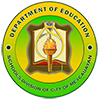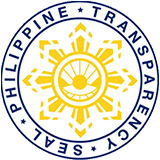Face-to-face learning has been the standard way of instruction for centuries. While online instruction is becoming increasingly popular, in-person study may still be the best option for some people. With face-to-face learning, teachers are better able to gauge the understanding and interest of students. It is also easier to hold students accountable.
While online learning can be any type of learning that takes place over the internet, this could be a supplemental course, a full degree program, or self-study. Online learning that is done asynchronously allows students to learn at their own pace and place.
Internet access is a huge challenge. In urban areas, teachers can give lessons over video conferencing platforms, or Facebook Live, but 52.6% of the Philippines’ 110 million people live in rural areas with unreliable connectivity. It doesn’t come cheap either: research from cybersecurity firm Surf Shark found that the internet in the Philippines is among the least stable and slowest, yet the most expensive, of 79 countries surveyed.
Internet access assumes, of course, that the user has a device, but in the Philippines that is not a given. Private polling firm Social Weather Stations found that just over 40% of students did not have any device to help them in distance learning. Of the rest, some 27% were using a device they already owned, and 10% were borrowed from others, but 12% had to buy their own and whose families are spending an average of $172 per learner. To put it into perspective, that’s more than half the average monthly salary in the Philippines.
“Some of them don’t have cell phones,” says Leonard B. Termulo, a Master Teacher of Liputan Elementary School, who first noticed the digital divide when many of his 6th graders were unable to comply with what he thought of as a fun homework assignment: submitting videos of themselves performing.
“Because we’re in public school, we cannot demand that they buy phones,” Termulo says. “They don’t have money to buy their own food, and they’re going to buy their own cell phone for learning? Which is more important to live—to eat or to study?”
Teachers need to be equipped with the right resources too. A study from the National Research Council of the Philippines found that many teachers have had to shell out their own money to support their students in remote learning.
Government agencies do what they can to help. Earlier this year, the customs bureau donated phones and other gadgets it had confiscated to the education department for distribution to needy students. But it’s a drop in the ocean.
Some students are so exhausted by the struggle to study remotely that they are calling for long breaks between modules. Many parents and pressure groups are going even further, demanding total academic suspension until a clearer post-pandemic education system is ironed out.
Education is a right. Whatever form it will be, whether blended learning or modular, it’s better to continue it than to stop.
But in the meantime, with their workloads multiplied, it is students and teachers who are paying the price, regularly staying up late completing the reams of new paperwork generated by the distance learning system.
The COVID-19 pandemic has created unprecedented challenges economically, socially, and politically across the globe. More than just a health crisis, it has resulted in an educational crisis. During lockdowns and quarantines, 87% of the world’s student population was affected and 1.52 billion learners were out of school and related educational institutions (UNESCO Learning Portal, 2020). The suddenness, uncertainty, and volatility of COVID-19 left the education system in a rush of addressing the changing learning landscape. The disruption of COVID-19 in the educational system is of great magnitude that public schools have to cope with at the soonest possible time. The call is for public schools to develop a resilient learning system using evidence-based and needs-based information so that responsive and proactive measures can be instituted. Coping with the effects of COVID-19 in schools demands a variety of perspectives among stakeholders. Consultation needs to include an administration who supports the teaching-learning processes, the students who are the core of the system, the teachers who perform various academic roles, parents, and guardians who share the responsibility of learning continuity, the community, and the external partners who contribute to the completion of the educational requirements of the students. In the context of the pandemic, schools have to start understanding and identifying medium-term and long-term implications of this phenomenon on teaching, learning, student experience, infrastructure, operation, and staff. Public schools have to be resilient in times of crisis. Resiliency in the educational system is the ability to overcome challenges of all kinds–trauma, tragedy, crises, and bounce back stronger, wiser, and more personally powerful (Henderson, 2012). The educational system must prepare to develop plans to move forward and address the new normal after the crisis. To be resilient, schools needs to address teaching and learning continuity amid and beyond the pandemic.
MINERVA L. SIONGCO
Teacher III/ Liputan ES


